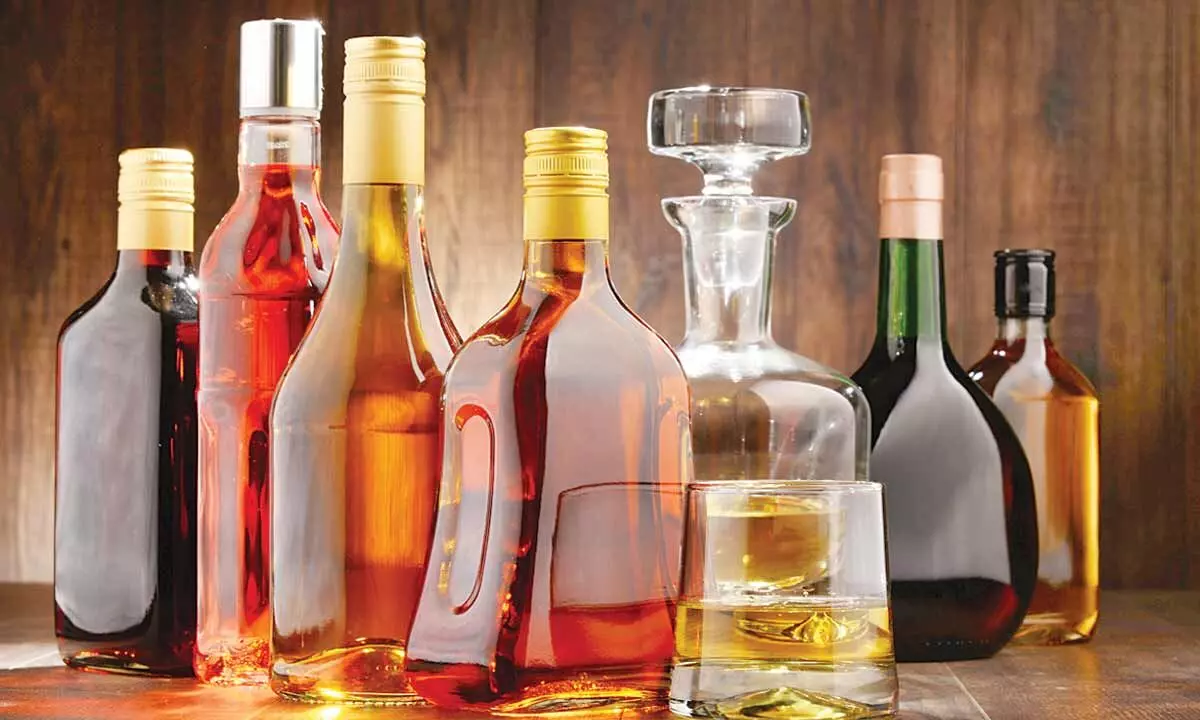Raising a toast to premium spirits is the new style statement
India’s growing middle-class population and dual-income families set to fuel domestic market
image for illustrative purpose

Premium spirits are made from natural ingredients and are of better quality than regular liquor. These factors are expected to drive the market forward over the forecast period. The premium spirits market is primarily driven by an increase in disposable income
The global premium spirit market size is valued at $235.74 billion by 2027 and is expected to grow at a compound annual growth rate (CAGR) of 10.3 per cent during the forecast period. The growing popularity of high-end brands among the millennial population has been fueling market growth across the world. The sales of cocktails, such as margaritas, martinis, and manhattans, have gained remarkable traction in the developed economies of North America and Europe. Furthermore, the growing popularity of the cocktail culture in developing nations like India and China is expected to promote the scope of premium spirits.
Over the past few years, the growth of high-end alcohol segment has been outpacing the growth of the overall segment, thereby pushing the overall consumption of alcohol all over. The growth of this segment is majorly attributed to the rising demand for diverse, innovative, and authentic high-end alcoholic beverages among the millennials. Premiumization has become a growing trend in the alcohol industry. Most of the categories in the industry are going through substantial premiumization. Tequila, in particular, has been gaining traction among consumers over the years. Over the past few years, with the changing lifestyle, consumers are preferring quality to quantity. Like the food industry, consumers of the beverage industry are also seeking sustainable manufacturing practices. This trend has widened opportunities for firms to offer products at premium price points. Furthermore, the health-conscious consumers are increasingly shifting towards low-alcohol or no-alcohol beverages from traditional alcoholic beverages, which may hamper the growth of the market in the upcoming years.
In recent years, millennials made up a sizable portion of alcohol consumers, and it is projected to continue over the forecast period. The generation has a sizable amount of purchasing power and is over the legal drinking age (LDA). In addition, premium spirits are made from natural ingredients and are of better quality than regular liquor. These factors are expected to drive the market forward over the forecast period. The premium spirits market is primarily driven by an increase in disposable income. Customers with high disposable income have access to the best quality spirits. Customers are paying more for high-quality, premium products because they are becoming more conscious of their drinking habits. In addition, the increasing trend of visiting pubs and bars among the youth is expected to drive the market forward.
However, rising government regulations on alcohol, rising health consciousness among consumers and increasing shifts in consumer preferences toward low or no-alcohol drinks over traditional alcoholic ones, are acting as restraints and are expected to hinder the market growth.
India, China, Hong Kong, Australia, New Zealand, and South Korea are the prominent markets in the region. China accounted for the largest share in the Asia Pacific market as a result of increased sales volume of high-end spirits at the domestic level. In addition, a growing middle-class population and an increasing number of urban dual-income families in India are expected to fuel the growth of the market in the nation in the near future.
The global market is highly competitive with the presence of numerous global level players. Existing players are witnessing significant growth of their premium brands over the years. For instance, Diageo’s premium-and-above brands were the best performers in the developed markets in 2018. These brands’ ‘Reserve’ collection grew by 11 per cent in 2018-2019. Similarly, Pernod Ricard, Rémy Cointreau, and Suntory Group are also witnessing considerable growth in the high-end product segments; hence, the focus on premiumization. Even outside the super-premium category, the spirits market is witnessing resurgence and growing at unprecedented rates. Spirits now account for 37.4 per cent of the beverage alcohol market. The volume is up by five million cases from last year, and, as a result, this segment saw its ninth-consecutive year of sales growth, totaling $44 billion in sales. And millennials are the spirits industry’s biggest customers.
The how and why people purchase spirits is also changing. The new consumer has confidence in the economy. Just 29 per cent of all legal-aged drinkers are millennials, but this group is purchasing more than 32 per cent of all spirits. And they go for fancy stuff. Millennials want to have a great experience drinking their spirits. Whether that means sipping vodka after a tour of a craft distillery, sipping a new cocktail in a fancy bar or sharing a great-tasting liquor while staying home and hanging out with friends.
They also care about the health ramifications of drinking too much or a high-caloric drink. Spirits provide an alternative to high-sugar wines and calorie dense beers.

